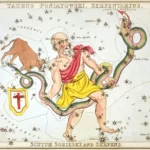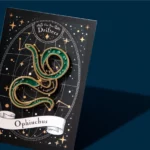Are you fascinated by astrology and curious about deepening your understanding of astrological chart interpretation? Analyzing aspects in an astrological chart can provide valuable insights into a person’s personality traits, life events, and overall life journey. By examining the relationships between different planets and points in the birth chart, we can gain a richer understanding of an individual’s unique cosmic makeup. In this comprehensive guide, we will explore the various types of aspects, the significance of major versus minor aspects, and delve into the interpretation of aspects in the birth chart. Prepare to uncover the hidden connections and unlock the secrets of the stars!
Contents
- Understanding Aspects
- Analyzing Aspects
- Interpreting Aspects in the Birth Chart
- Aspects and Personality Traits
- Aspects and Life Events
- Examples of Aspects in Celebrity Charts
- Conclusion
-
Frequently Asked Questions
- What are the types of Aspects?
- What is the significance of Major versus Minor Aspects?
- What are Conjunctions in astrology?
- What are Oppositions in astrology?
- What are Trines in astrology?
- What are Squares in astrology?
- What are Sextiles in astrology?
- What is a Quincunx in astrology?
- How do aspects influence personality traits?
- References
-
Frequently Asked Questions
- 1. What is the importance of analyzing aspects in astrological chart interpretation?
- 2. How can I understand the different types of aspects in astrology?
- 3. What are aspect orbs and why are they important?
- 4. How do major aspects differ from minor aspects in astrological chart interpretation?
- 5. Can you explain the significance of conjunctions in astrology?
- 6. How do oppositions affect an individual’s astrological chart?
- 7. What does a trine indicate in astrology?
- 8. How do squares influence an individual’s astrological chart?
- 9. Can you explain the significance of sextiles in astrology?
- 10. What does the quincunx aspect indicate in astrological chart interpretation?
- References
- Read More
Understanding Aspects
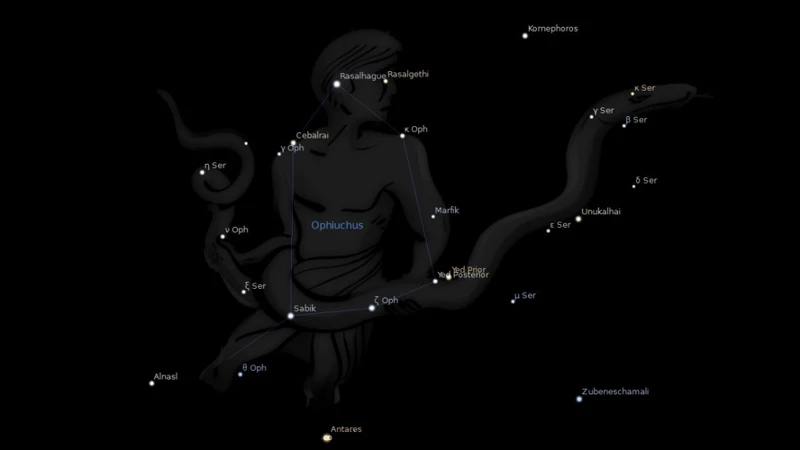
Understanding aspects is a key aspect (pun intended) of astrological chart interpretation. Aspects refer to the relationships between different planets and points in the birth chart and provide valuable insights into an individual’s cosmic makeup. By examining how these celestial bodies interact with each other, we can gain a deeper understanding of a person’s personality traits, strengths, challenges, and even the potential life events they may encounter. There are several types of aspects, each with its own unique energy and effect. These include conjunctions, oppositions, trines, squares, sextiles, and quincunxes. Major aspects, such as the conjunction and opposition, often have a more significant impact on a person’s life, while minor aspects may have a more subtle influence. The orbs, or the specific degrees within which an aspect is considered valid, also play a role in interpreting aspects. As we explore the various types of aspects in the following sections, we will delve into their meanings and how they can be interpreted in the context of an individual’s birth chart. So, get ready to unravel the intricate web of astrological aspects and discover the hidden secrets they hold.
What are Aspects?
Aspects in astrology refer to the angles formed between celestial bodies in a birth chart. These angles determine the relationships and interactions between the planets, points, and other significant factors in an individual’s chart. Think of aspects as the cosmic conversations happening between different energies within the chart. For example, a conjunction occurs when two celestial bodies are in close proximity, amplifying their combined energy and creating a powerful influence on the individual’s life. On the other hand, an opposition arises when two planets are directly across from each other in the chart, symbolizing contrasting forces that often need resolution or balance. Other major aspects such as trines (120 degrees), squares (90 degrees), sextiles (60 degrees), and quincunxes (150 degrees) each have their own unique qualities and implications. These aspects paint a complex and nuanced picture of an individual’s birth chart, highlighting the various energies influencing their life journey. Understanding these angles is essential for gaining deeper insights into one’s personality, relationships, and life events.
Types of Aspects
There are several types of aspects in astrology, each with its own unique energy and influence. Understanding these different aspects is vital to interpreting an astrological chart accurately. Here are the main types of aspects:
1. Conjunction: A conjunction occurs when two planets are closely aligned in the same sign or within a few degrees of each other. This aspect intensifies the energy of the planets involved, creating a powerful synergy between them. It can signify a merging of energies and a focus on the qualities represented by the planets involved.
2. Opposition: An opposition arises when two planets are directly across from each other, approximately 180 degrees apart. This aspect represents a tension or polarity between the two planets and their energies. It often reflects a need to balance opposing forces and find harmony between conflicting desires or external circumstances.
3. Trine: A trine occurs when two planets are approximately 120 degrees apart, forming an angle of ease and harmony. This aspect suggests a natural flow of energy between the planets involved, often resulting in favorable outcomes. Trines are considered beneficial aspects that can bring opportunities, talents, and ease in various areas of life.
4. Square: A square is formed when two planets are approximately 90 degrees apart, creating a challenging aspect. This aspect signifies tension, obstacles, and internal conflicts. It often prompts growth and transformation, as the individual is faced with overcoming obstacles and learning important life lessons.
5. Sextile: A sextile arises when two planets are approximately 60 degrees apart. This aspect signifies opportunities, creativity, and harmonious connections. It can bring about positive changes and cooperation between the planets involved, often leading to personal growth and favorable outcomes.
6. Quincunx: A quincunx, also known as an inconjunct, occurs when two planets are approximately 150 degrees apart. This aspect represents a sense of unease or adjustment between the energies of the planets involved. It often requires flexibility and adaptation to navigate the challenges and imbalances it presents.
By understanding these different types of aspects and their meanings, astrologers can gain valuable insights into the dynamics and influences within an individual’s birth chart. Remember, it’s the combination of these aspects and their interactions that paint a comprehensive picture of a person’s cosmic makeup and life journey.
Analyzing Aspects
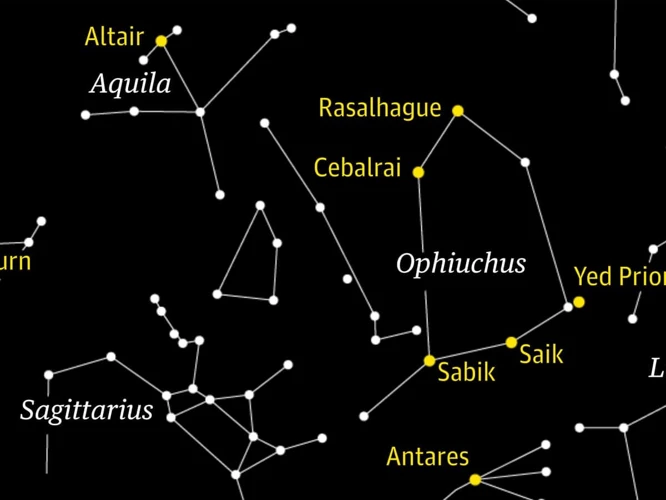
Analyzing aspects in an astrological chart involves a careful examination of the relationships between different planets and points. One important consideration is the aspect orbs, which determine the allowed degree range within which an aspect is considered valid. This helps astrologers gauge the strength and significance of each aspect. Major aspects, such as conjunctions, oppositions, and trines, have a more prominent influence on a person’s life. For example, a conjunction occurs when two planets are in close proximity to each other, indicating a blending of their energies and a strong emphasis on the associated traits. Oppositions, on the other hand, represent a tension or conflict between two planets, reflecting opposing forces or polarities within an individual’s psyche. Trines, on the contrary, indicate harmonious energies and opportunities for growth and ease. Squares, sextiles, and quincunxes are considered minor aspects but still hold significance in understanding the dynamics of an individual’s birth chart. Squares signify challenges and obstacles that can lead to growth and transformation, while sextiles represent supportive energies and opportunities for cooperation and creativity. Quincunxes, often seen as adjustment aspects, suggest the need for adaptation and integration of energies that may seem initially incompatible. To truly interpret the aspects in a birth chart, astrologers consider the specific planets involved, their zodiac signs and house placements, as well as any other relevant celestial points. Understanding the interplay of these aspects can provide valuable insights into an individual’s strengths, challenges, and potential life experiences. So, dive into the intricate dance of planetary aspects and unlock the rich tapestry of cosmic connections.
Aspect Orbs
Aspect orbs play a crucial role in astrological chart interpretation. They refer to the specific degrees within which an aspect is considered valid. Understanding the concept of orbs is essential for accurately analyzing and interpreting aspects in a birth chart. Each astrologer may have their own preferred range for orbs, but generally, a wider orb allows for a broader interpretation, while a narrower orb focuses on more precise and significant aspects. For example, a conjunction with a tight orb of 1-2 degrees may indicate a strong influence and a more potent effect on the individual’s life, whereas a wider orb of 5-8 degrees may imply a more subtle influence. It’s important to consider both the nature of the aspect and the orb when interpreting a birth chart to gain a comprehensive understanding of the dynamics at play. By examining the orbs, astrologers can identify the strength and intensity of the aspects and how they may manifest in an individual’s life. So, keep in mind the significance of aspect orbs as you explore the depths of astrological chart interpretation and uncover the intricate connections between celestial bodies.
Major vs Minor Aspects
Major and minor aspects are two categories used to differentiate the significance and impact of different astrological aspects. Major aspects, such as the conjunction and opposition, have a more powerful influence on a person’s life. These aspects occur when planets or points in the birth chart are in close proximity to each other or directly opposite each other. The conjunction, for example, happens when two planets are in the same sign and degree, merging their energies and creating a potent force. This aspect often signifies a strong focus and intensity in the areas of life represented by the planets involved. The opposition, on the other hand, occurs when two planets are directly opposite each other in the chart, indicating a dynamic tension and the need to find balance between the energies represented by the planets.
Minor aspects, on the other hand, have a more subtle influence and are often considered less powerful than major aspects. Examples of minor aspects include sextiles, squares, trines, and quincunxes. These aspects occur when planets or points are at specific angles to each other, forming harmonious or challenging connections. Sextiles, for instance, happen when two planets are approximately 60 degrees apart, bringing opportunities for creativity, communication, and cooperation. Squares, on the other hand, occur when planets are about 90 degrees apart, creating tension and challenges that can lead to growth and transformation. Trines, at approximately 120 degrees apart, bring ease and flow, providing natural talents and blessings. Lastly, quincunxes, at around 150 degrees apart, create a sense of discomfort and adjustment, urging individuals to make necessary changes to find harmony and integration.
While major aspects may have a more pronounced impact on an individual’s life, minor aspects should not be disregarded as they provide valuable insights into the nuances and complexities of a person’s chart. By considering both major and minor aspects, astrologers can paint a more comprehensive picture of an individual’s astrological makeup and offer deeper guidance and understanding. So, whether it’s the powerful convergence of energies in a conjunction or the subtle dance between planets in a sextile, every aspect in the birth chart contributes to the intricate tapestry of an individual’s cosmic blueprint.
Conjunctions
Conjunctions in astrology occur when two planets are in close proximity to each other in the birth chart, creating a powerful merging of their energies. This alignment intensifies the influence of both planets and magnifies their combined effects. When planets are in conjunction, their qualities and characteristics blend together, creating a concentrated force that can manifest in various ways. Conjunctions can signify a strong emphasis on a particular area of life, such as personal identity (Sun conjunct Ascendant), emotions (Moon conjunct Venus), or communication (Mercury conjunct Mars). The specific planets involved and the signs they occupy provide further insights into the nature of the conjunction. For example, a conjunction between Mars and Venus can indicate a passionate and intense love nature, with an archetype of a fiery and magnetic relationship. It’s important to consider the overall chart dynamics and the houses involved to gain a comprehensive understanding of how the conjunction influences an individual’s life. So, buckle up and prepare to explore the intriguing world of conjunctions, where two planetary energies intertwine and shape the tapestry of one’s astrological blueprint.
Oppositions
Oppositions in astrology occur when two planets are approximately 180 degrees apart in the birth chart. This creates a dynamic and often tension-filled relationship between the energies represented by these planets. Opposing planets are said to be in conflict, pulling in different directions and creating a sense of duality within an individual’s personality. This can manifest as inner struggles, opposing desires, or challenges in finding balance and integration. For example, the opposition between the Sun and the Moon represents the tension between conscious and unconscious aspects of the self, while the opposition between Venus and Mars may signify a clash between love and passion.
In interpreting oppositions, it is important to explore the specific planets involved and their corresponding energies. The signs in which these planets are located can offer additional insight into how the opposition is expressed. For instance, an opposition between Venus in Aries and Mars in Libra may indicate a struggle between asserting one’s own needs and desires (Aries) versus compromising and seeking harmony in relationships (Libra).
Oppositions can be challenging, but they also provide an opportunity for growth and self-awareness. By recognizing and embracing the opposing energies within ourselves, we can learn to find a middle ground and integrate these seemingly conflicting aspects of our personality. This can lead to a greater sense of wholeness and balance.
In relationships, oppositions can create a magnetic and intense attraction between individuals who have planets in opposition in their birth charts. These relationships often involve a push-pull dynamic, where both parties are simultaneously drawn to and challenged by each other. If both individuals are willing to work through the inherent tensions, these relationships can lead to deep transformative experiences and personal growth.
Oppositions in astrology highlight the need for balance, integration, and self-awareness. Recognizing and embracing the opposing energies within ourselves can lead to personal growth and a greater understanding of our unique cosmic makeup. So, embrace the duality and explore how oppositions shape your journey of self-discovery.
ophiuchus-friendship-compatibility
Trines
Trines are harmonious aspects in astrology, denoting a flowing and positive connection between planets or points in a birth chart. When two celestial bodies are in a trine aspect, they are approximately 120 degrees apart, forming an equilateral triangle. Trines signify ease, support, and opportunities for growth and manifestation. This aspect encourages the planets involved to work together harmoniously, enhancing their energies and creating a sense of natural talent and ease in the areas of life represented by those planets.
Trines facilitate a seamless flow of energy and can indicate innate talents, abilities, and areas of life where things tend to come effortlessly. They often bring a sense of luck, abundance, and natural gifts. For example, a trine involving the Sun and the Moon suggests emotional harmony and an ease in expressing one’s identity and emotions in alignment with each other. Similarly, a trine between Venus and Jupiter may indicate a strong, positive influence on relationships, love, and abundance.
It’s important to remember that while trines are generally positive, they can indicate areas of life where we may become complacent or take things for granted. The ease and comfort provided by trines can sometimes lead to a lack of motivation or a reluctance to push beyond our comfort zones. It is still essential to actively harness and develop the energies represented by the planets involved in the trine.
Trines offer a sense of flow and collaboration between the planets, enhancing the harmony and potential success in various areas of life. Embracing the gifts and opportunities that trines bring can lead to personal growth and fulfillment. So, take a moment to explore the trines in your birth chart and uncover the blessings they hold within.
Squares
Squares in astrology represent a challenging and dynamic aspect between two planets or points in a birth chart. When two celestial bodies form a square aspect, they are approximately 90 degrees apart, creating a sense of tension, conflict, and friction. This aspect signifies a clash between the energies represented by the planets involved. It can generate a sense of inner turmoil and a need to navigate through obstacles in order to achieve growth and transformation. Squares often create an internal struggle, pushing individuals out of their comfort zones and prompting them to face their fears. They can be seen as opportunities for personal development and learning important life lessons. For example, a square between Mars and Saturn may indicate a struggle between assertiveness and discipline, requiring the individual to find a balance between taking action and embracing structure. It’s important to note that squares are not necessarily negative, but rather catalysts for growth and change. By working with the inherent challenges of squares, individuals can harness their energy to overcome obstacles, build resilience, and ultimately achieve personal fulfillment. Understanding the significance of squares in an astrological chart allows for a deeper understanding of the complexities of an individual’s personality and life experiences. So, embrace the square aspect as an invitation to transform and evolve, for within its tension lies the potential for great strength and personal development.
Sextiles
Sextiles are harmonious aspects in astrology that occur when two celestial bodies are approximately 60 degrees apart. This aspect creates a flowing energy and facilitates easy communication and cooperation between the planets involved. When two planets form a sextile aspect, they work together in a complementary and supportive manner, enhancing each other’s qualities. The sextile promotes opportunities for growth, creativity, and positive connections. It brings a sense of ease and receptivity, allowing individuals to tap into their innate talents and express themselves with confidence. This aspect encourages flexibility, adaptability, and a willingness to embrace new experiences. Those with sextiles in their birth chart often have a natural ability to find harmony and balance in various areas of life. For example, a sextile between Venus and Jupiter may indicate a person who has a knack for attracting abundance and joy in their relationships and personal endeavors. It fosters a sense of optimism and expansiveness in love and life. Understanding the significance of sextiles in astrology can provide valuable insights into the unique strengths and opportunities available to individuals in their life journey. So, embrace the harmonious energy of the sextile and unlock your potential for growth and fulfillment.
Quincunx
The quincunx is an intriguing aspect in astrological chart interpretation. Also known as the inconjunct, this aspect occurs when two planets are approximately 150 degrees apart. It creates a sense of tension and unease, as the energies of the planets involved seem to clash and struggle to find a harmonious balance. The quincunx represents a need for adjustment and adaptation in order to integrate the qualities of the planets involved.
When analyzing the quincunx, it is important to look at the signs and elements involved. The signs will provide insight into the specific areas of life where this aspect may manifest, while the elements can give clues about how the energy is expressed. For example, a quincunx between Mercury in Cancer and Saturn in Aquarius may suggest difficulty in effectively communicating emotions (Cancer) and logic (Aquarius), requiring the individual to find a way to reconcile these seemingly opposing forces.
The quincunx often presents challenges and areas of growth for individuals. It requires a willingness to adapt, make compromises, and find creative solutions to navigate the conflicting energies. Individuals with strong quincunx aspects in their charts may often find themselves caught between two worlds, constantly trying to find a way to reconcile seemingly disparate aspects of their lives.
It’s important to note that while the quincunx can pose challenges, it also offers opportunities for personal growth and transformation. By embracing the need for adjustment and finding innovative ways to integrate conflicting energies, individuals with quincunx aspects can develop unique perspectives and problem-solving skills.
The quincunx aspect adds a layer of complexity and nuance to astrological chart interpretation. It challenges individuals to find a way to harmonize conflicting energies and adapt to different circumstances. Embracing the lessons of the quincunx can lead to personal growth and a deeper understanding of oneself. So, explore the quincunx in your birth chart and unlock the secrets it holds.
Interpreting Aspects in the Birth Chart
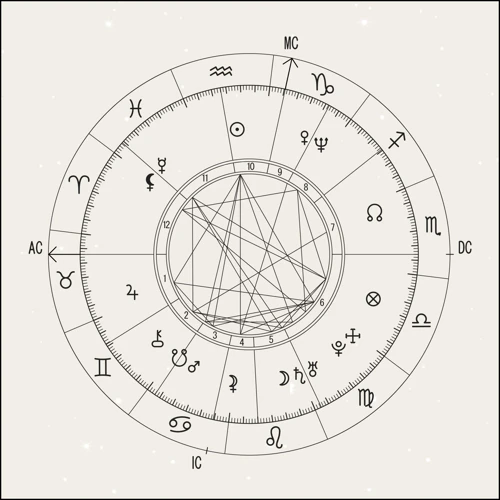
Interpreting aspects in the birth chart is a crucial step in understanding the unique configuration of a person’s cosmic influences. Each aspect carries its own significance and adds a layer of complexity to the overall interpretation of the chart. When analyzing aspects, it is important to consider the specific planets involved, their positions, and the nature of the aspect itself. For example, the Sun represents the core essence of a person’s identity, so aspects involving the Sun can shed light on their strengths, motivations, and self-expression. The Moon, on the other hand, governs emotions and instincts, so aspects involving the Moon can reveal insights into a person’s emotional well-being and how they nurture themselves and others. The Ascendant, also known as the rising sign, represents the person’s outward personality and how they present themselves to the world. Aspects involving the Ascendant can indicate how a person interacts with others and the first impression they make. Aspects involving personal planets like Mercury, Venus, and Mars can provide insights into communication style, love life, and assertiveness respectively. Outer planets such as Jupiter, Saturn, Uranus, Neptune, and Pluto indicate broader themes and generational influences in the birth chart. Interpreting aspects in the birth chart requires a holistic approach, taking into account the interplay between different planets and points to gain a comprehensive understanding of an individual’s astrological makeup. So the next time you examine a birth chart, pay close attention to the aspects present, as they hold the key to unlocking the rich tapestry of a person’s cosmic potential.
The Sun
When analyzing the aspects of the Sun in an astrological birth chart, we gain valuable insights into a person’s core essence, vitality, and self-expression. The Sun represents our ego, identity, and individuality, reflecting our innermost desires and aspirations. Aspects to the Sun shed light on how we shine, how we seek validation, and the areas of life where we strive for growth and fulfillment. Harmonious aspects, such as trines and sextiles, indicate a natural flow of energy, allowing the individual to radiate their authentic self with ease. On the other hand, challenging aspects, such as squares and oppositions, may present obstacles and call for inner transformation to fully embody their Sun’s potential. By understanding the Sun’s aspects in a birth chart, we can gain a deeper understanding of a person’s unique strengths, challenges, and the areas of life where they are most likely to experience personal growth and self-discovery. It’s fascinating to explore how the Sun’s aspects shape an individual’s sense of self and journey towards self-realization.
The Moon
The Moon is a significant celestial body in astrology and holds deep meaning in the interpretation of aspects in a birth chart. As the ruler of emotions, instincts, and intuition, the Moon represents our innermost self and reflects our emotional landscape. When analyzing aspects involving the Moon, we gain valuable insights into an individual’s emotional needs, nurturing style, and subconscious patterns.
One common aspect involving the Moon is the Moon trine Venus aspect. This aspect creates a harmonious flow of energy between the Moon and Venus, the planet of love and relationships. Individuals with this aspect may naturally attract loving and supportive relationships in their lives. They have a deep capacity for emotional connection and are often seen as gentle, kind, and caring individuals. This aspect may enhance their ability to express love and affection, making them nurturing and compassionate partners. However, it’s important to note that other aspects in the chart can modify the expression of this aspect, so a holistic analysis is necessary for a comprehensive understanding.
Another significant aspect involving the Moon is the Moon square Mars aspect. This aspect creates tension and conflict between the Moon and Mars, the planet of action and aggression. Individuals with this aspect may struggle with emotional volatility and impulsive reactions. They may experience internal conflicts between their assertive and emotional sides, leading to occasional bursts of anger or frustration. This aspect can indicate a need to find healthy outlets for emotional expression and to learn how to balance assertiveness with emotional sensitivity.
It is worth noting that the interpretation of aspects involving the Moon can vary depending on the other planets involved and the overall dynamics of the birth chart. Additionally, the house placement of the Moon provides further insights into the specific areas of life where these emotional dynamics play out. Understanding the Moon’s aspects in a birth chart allows us to gain a deeper understanding of an individual’s emotional landscape and provides valuable information for personal growth and self-awareness.
Whether the Moon forms harmonious aspects or challenging ones, its position and aspects in the birth chart give us valuable clues about an individual’s emotional needs, relationships, and the ways in which they navigate the world around them. So, dive into the fascinating world of interpreting the Moon’s aspects, and uncover the intricacies of emotional expression and intuition in astrology!
The Ascendant
The Ascendant, also known as the rising sign, is a crucial point in the birth chart that represents the individual’s outward personality and the mask they wear when presenting themselves to the world. It is determined by the zodiac sign that was rising on the eastern horizon at the time of their birth. The Ascendant plays a significant role in shaping a person’s physical appearance, demeanor, and overall first impression. Its position in the birth chart and any aspects it forms with other planets can provide valuable insights into an individual’s approach to life and their interaction with the world around them.
For example, if someone has their Ascendant in Aries, they may radiate a confident and assertive energy, while a Pisces Ascendant may imbue them with a more gentle and empathetic aura. The placement of the ruling planet of the Ascendant can also offer further insights into their personality traits.
In interpreting the Ascendant, it is essential to consider its aspects to other planets, as these can shed light on how the individual’s outward expression is influenced by different areas of their life or how they may navigate various life circumstances. For instance, an Ascendant forming a harmonious trine with the Moon may indicate emotional sensitivity and an instinctual connection to their outward persona. On the other hand, a square aspect with Mars may bring an element of assertiveness or even aggression to their outward demeanor.
Understanding the Ascendant can provide valuable information about how individuals approach new situations, engage with others, and navigate their personal and professional lives. It is an integral part of a person’s astrological profile and contributes to a well-rounded understanding of their overall character. So, delve into the mysteries of the Ascendant and discover how it influences the outward expression of individuals’ unique energy and personality.
Personal Planets
Personal planets play a significant role in astrological chart interpretation. These planets include the Sun, Moon, Mercury, Venus, and Mars, and they represent core aspects of our individuality and personality. They are called “personal” because they reflect our fundamental needs, desires, and self-expression. The Sun represents our ego, self-expression, and life purpose. It reveals the essence of who we are and what drives us. The Moon represents our emotions, instincts, and subconscious patterns. It reflects our emotional needs and how we nurture ourselves and others. Mercury governs communication, intellect, and how we process information. It signifies how we express ourselves verbally and intellectually and how we make decisions. Venus represents love, relationships, values, and beauty. It reveals our approach to love and our preferences in relationships. Mars represents our energy, drive, and assertiveness. It reflects how we take action and pursue our desires. Understanding the placement and aspects of these personal planets in the birth chart provides valuable insights into our unique qualities, needs, and behaviors. Whether it’s the fiery passion of Mars or the gentle nurturing of the Moon, these personal planets shape our individuality and play a significant role in various aspects of our lives, including love, relationships, career, and personal growth. So, dive deep with us as we decode the personal planets and their impact on our cosmic journey.
Outer Planets
Outer planets, including Uranus, Neptune, and Pluto, play a significant role in astrological chart interpretation. These celestial giants bring a unique and transformative energy to the birth chart. Uranus represents innovation, rebellion, and breakthroughs. Its placement and aspects can indicate areas of life where an individual seeks freedom, originality, and independence. Neptune, on the other hand, symbolizes dreams, spirituality, and illusions. Its influence can be seen in a person’s imagination, intuition, and emotional depths. Paying attention to Neptune’s placement and aspects can provide insights into an individual’s creative abilities and spiritual inclinations. Lastly, Pluto is associated with power, transformation, and regeneration. This planet delves into the depths of the unconscious, bringing hidden desires and intense energies to the surface. The placement and aspects of Pluto in the birth chart can reveal areas of life where a person may experience profound transformations and growth. The outer planets, with their cosmic influence, add depth and complexity to chart interpretation, offering a glimpse into the deeper layers of an individual’s personality and life journey.
Aspects and Personality Traits
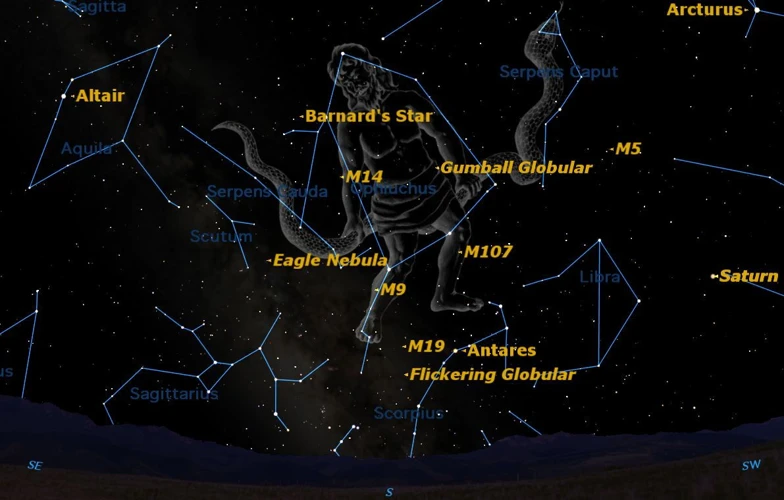
Aspects in astrology can provide valuable insights into a person’s personality traits. The specific aspects present in an individual’s birth chart can reveal certain characteristics and tendencies. For example, a person with a strong emphasis on trine aspects may possess a natural flow and harmony in their personality. Trines are considered positive aspects that indicate ease, creativity, and talents in specific areas of life. Those with a significant number of trines in their chart may be naturally gifted in areas such as communication, artistic pursuits, or leadership. On the other hand, squares in an individual’s chart can suggest challenges and internal conflicts. Squares represent tension and obstacles that need to be overcome. People with prominent square aspects may have a drive to push through difficulties and find solutions, leading them to develop resilience and problem-solving skills. Additionally, conjunctions in the birth chart signify a merging of energies between planets. When two or more planets are conjunct, their influences blend together, amplifying their effects. These individuals may exhibit a heightened intensity or focus in the areas represented by the planets involved. Thus, by analyzing the aspects present in a person’s birth chart, astrologers can gain insights into their personality traits and better understand their unique strengths and challenges.
Influence on Personal Characteristics
Aspects in astrology have a profound influence on a person’s personal characteristics and traits, shaping their overall personality and behavior. The specific aspects present in an individual’s birth chart can highlight their strengths, weaknesses, and unique qualities. For example, a strong trine aspect between the Sun and Jupiter may indicate a person who is naturally optimistic, generous, and driven towards success. On the other hand, challenging aspects like squares or oppositions can bring about internal conflicts or obstacles that individuals need to navigate in order to grow and develop. Understanding these aspects can provide valuable insights into the complexities of an individual’s character and help them recognize their own potential for growth and self-improvement. By analyzing the aspects in a birth chart, astrologers can uncover the intricate threads that shape a person’s personality, allowing them to offer guidance and support as individuals navigate their life’s journey. So, dive into the realm of astrological aspects and discover how they can mold and influence personal characteristics for a more fulfilling and self-aware existence.
Strengths and Challenges
Understanding the strengths and challenges associated with different aspects in an astrological chart can provide valuable insights into an individual’s personality and life journey. Each aspect carries its own unique energy and influences various aspects of a person’s life. For example, a harmonious trine aspect between planets can signify natural talents, ease, and flow in certain areas of life. Individuals with this aspect may possess inherent gifts and find it easier to manifest positive outcomes. On the other hand, challenging aspects like squares and oppositions can indicate areas of growth, conflict, and tension. These aspects can push individuals to overcome obstacles, develop resilience, and learn important life lessons. It’s important to remember that strengths and challenges are not fixed traits but are opportunities for personal growth and development. By understanding the aspects in one’s birth chart, individuals can enhance their self-awareness, navigate challenges more effectively, and cultivate their strengths to achieve personal fulfillment. So, delve deep into your birth chart, explore your aspects, and embrace the unique strengths and challenges they bring.
Aspects and Life Events
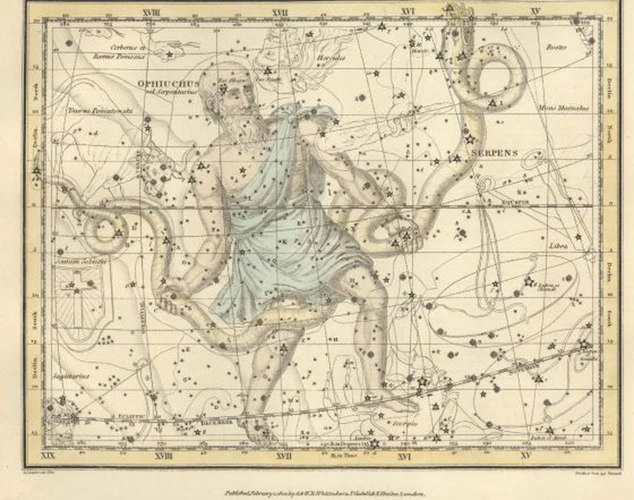
Aspects in astrology not only provide insights into an individual’s personality traits but also play a significant role in shaping their life events. The relationships and angles formed between planets and points in the birth chart can give valuable information about various aspects of life, including relationships, career, finances, and health. When analyzing aspects in relation to life events, it is essential to consider the specific planets involved, their positions, and the type of aspect formed. For example, aspects involving the personal planets, such as the Sun, Moon, Mercury, Venus, and Mars, can provide insights into a person’s relationships and love life. A harmonious aspect, like a trine or a sextile, may indicate smooth and fulfilling relationships, while challenging aspects like squares or oppositions may bring about relationship obstacles and conflicts. The aspects involving outer planets, such as Uranus, Neptune, and Pluto, often point towards significant transformative events and turning points in one’s life. These aspects may bring about radical personal growth, spiritual awakenings, or even major life upheavals. Additionally, aspects related to career and finances can shed light on an individual’s professional journey, financial stability or challenges, and vocational fulfillment. Health and well-being can also be influenced by certain aspects in the birth chart. For instance, difficult aspects involving planets like Saturn or Chiron could indicate potential health issues or the need for healing and personal growth. By understanding the connections between aspects and life events, astrologers can offer guidance and insights to individuals seeking a deeper understanding of their personal journeys and the potential events that may unfold. So, whether you are curious about your love life, career prospects, or overall well-being, exploring the aspects in your birth chart can provide valuable insights and help navigate the twists and turns of life’s journey.
Relationships and Love Life
Relationships and love life are areas of great interest when it comes to astrological chart interpretation. The aspects in a person’s birth chart can provide valuable insights into their approach to relationships, compatibility with potential partners, and the overall dynamics of their love life. For example, the position and aspects of Venus, the planet of love and romance, can give clues about a person’s love language, preferences, and ideal partner qualities. Additionally, aspects involving the Moon and Mars can shed light on emotions, passion, and assertiveness in relationships. By analyzing these aspects, astrologers can help individuals gain a deeper understanding of their love life patterns and dynamics, and provide guidance in finding and nurturing meaningful partnerships. Whether you’re curious about your compatibility with a particular sign or want to explore your own love language, astrology offers valuable insights into the complexities of relationships. So, buckle up and embark on a journey of self-discovery and understanding of love through the lens of astrology.
Career and Finances
When analyzing aspects in the birth chart, it’s essential to consider their influence on one’s career and finances. The aspects between different planets can provide valuable insights into a person’s vocational path and financial prospects. For example, a harmonious trine between Venus and Jupiter could indicate a natural talent for attracting wealth and success in fields such as finance, entrepreneurship, or the arts. On the other hand, challenging aspects like a square between Saturn and Mars might imply obstacles or delays in career advancement, requiring perseverance and strategic planning to overcome. Additionally, aspects involving the Midheaven, such as a conjunction between the Sun and Midheaven, can shed light on an individual’s professional goals and public image. It’s important to consider the overall dynamics of the chart, including any relevant planetary placements in the 10th house of career, to gain a comprehensive understanding of how aspects influence one’s professional life and financial well-being. By analyzing the aspects in the birth chart, astrologers can offer valuable insights and guidance to individuals seeking to align their career paths with their true potential and make informed financial decisions. So, dive into the fascinating realm of astrological aspects and discover the hidden connections between the stars and your occupation or financial prosperity.
Health and Well-being
When it comes to health and well-being, the aspects in an astrology chart can provide valuable insights into potential strengths and challenges that an individual may face. Certain planetary aspects can indicate heightened sensitivity to certain health conditions or a predisposition towards specific wellness practices. For example, a strong aspect between the Sun and Mars may suggest an abundance of vital energy and physical strength, making regular exercise and sports a natural fit for maintaining overall well-being. On the other hand, challenging aspects between Saturn and the Moon could indicate a greater need for self-care and mental well-being practices to manage stress and avoid emotional burnout. Additionally, aspects involving the sixth house and its ruling planet can shed light on areas of the body that may be more susceptible to health issues. It’s important to remember that while aspects can provide insights, they are not deterministic. Self-care, a healthy lifestyle, and regular medical check-ups are crucial for overall well-being, regardless of the astrological aspects in one’s chart. So, embrace the wisdom of the stars while taking responsibility for your health and well-being journey.
Examples of Aspects in Celebrity Charts

Examples of aspects in celebrity charts provide us with real-life illustrations of how these cosmic connections manifest in the lives of well-known individuals. Let’s explore a couple of fascinating cases that highlight the significance of aspects in astrological analysis.
1. Famous Individual 1:
– Sun conjunct Moon: This powerful conjunction indicates a strong sense of self and emotional awareness. It suggests that this individual’s core identity is closely aligned with their emotions and instincts, resulting in a harmonious integration of their inner and outer selves.
– Venus square Mars: This aspect signifies a dynamic tension between love and passion. It can manifest as intense romantic relationships filled with passion, but there may also be challenges in finding a balance between harmony and assertiveness in their love life.
2. Famous Individual 2:
– Jupiter trine Uranus: This harmonious aspect suggests a natural inclination for innovation, originality, and a strong desire for personal freedom. It indicates that this individual has a knack for taking risks and embracing change, which often leads to unexpected opportunities and positive breakthroughs in their career.
– Saturn opposite Moon: This opposition indicates potential struggles regarding emotional fulfillment and a need for emotional security. It suggests a tension between responsibilities and desires, leading to lessons in emotional boundaries and self-nurturing.
By examining the aspects present in celebrity charts, we can see how these celestial connections shape and influence different areas of their lives. These examples serve as valuable reference points for understanding how aspects can manifest in our own birth charts. Remember, astrology is a deeply personal and nuanced practice, so it’s important to consider the entire birth chart and the specific placements of planets when interpreting aspects in any individual’s chart. If you’d like to delve deeper into the astrological influences, you may also want to explore the friendship compatibility or love language of Ophiuchus, the 13th zodiac sign, which adds a new layer to astrological analysis.
Famous Individual 1
Famous Individual 1, a prominent figure in the entertainment industry, has a birth chart that reveals intriguing aspects that have shaped their life and career. One notable aspect in their chart is a powerful conjunction between the Sun and Venus. This aspect bestows them with a magnetic charm, artistic talents, and a natural sense of style that has captivated audiences worldwide. Their creative endeavors are further enhanced by a harmonious trine between Mars and Neptune, infusing their work with a touch of imagination and a strong emotional depth. However, their chart also presents challenges in the form of a square between Saturn and Uranus, which brings a constant tension between tradition and innovation. Despite this, Famous Individual 1’s determination and perseverance have allowed them to navigate these conflicting energies, resulting in a successful and influential career. To discover more about the intriguing aspects in this celebrity’s birth chart, continue reading our exploration of examples of aspects in celebrity charts.
Famous Individual 2
Famous Individual 2 has a birth chart that showcases some fascinating aspects. One prominent aspect in their chart is a conjunction between their Sun and Mercury. This aspect grants them exceptional communication skills and intellectual prowess. They have a natural talent for expressing themselves articulately and persuasively. This aspect also indicates a quick and agile mind, allowing them to easily grasp complex concepts and analyze information effectively. Additionally, their chart reveals a square aspect between their Mars and Pluto. This intense aspect signifies a strong drive for power, ambition, and transformation. They possess a relentless determination and can be incredibly resourceful when it comes to achieving their goals. However, this aspect may also manifest as a tendency towards power struggles and a need to control situations. It is essential for Famous Individual 2 to channel their energy in productive and constructive ways to avoid potential conflicts. These aspects in Famous Individual 2’s birth chart provide insight into their unique strengths and challenges and offer a glimpse into their captivating persona.
Conclusion
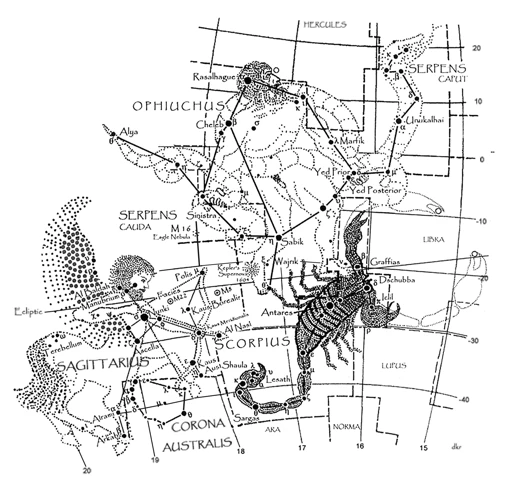
In conclusion, analyzing aspects in astrological chart interpretation is a fascinating and valuable tool for gaining deeper insights into a person’s life. By understanding the relationships between planets and points in the birth chart, we can unlock hidden patterns and potentials that shape an individual’s personality, strengths, and challenges. The various types of aspects, such as conjunctions, oppositions, trines, squares, sextiles, and quincunxes, each offer unique energies and dynamics that contribute to a person’s cosmic makeup. Major aspects, like the conjunction and opposition, often have a more profound impact, while minor aspects add subtlety to the overall picture. These aspects can influence different areas of life, from relationships and love life to career and finances, and even health and well-being. By studying aspects in celebrity charts, we can see how these cosmic connections manifest in the lives of famous individuals. Astrology is a powerful tool for self-reflection and personal growth, allowing us to understand ourselves and others on a deeper level. So, dive into the fascinating world of aspects and let the stars guide you on your journey of self-discovery.
Frequently Asked Questions
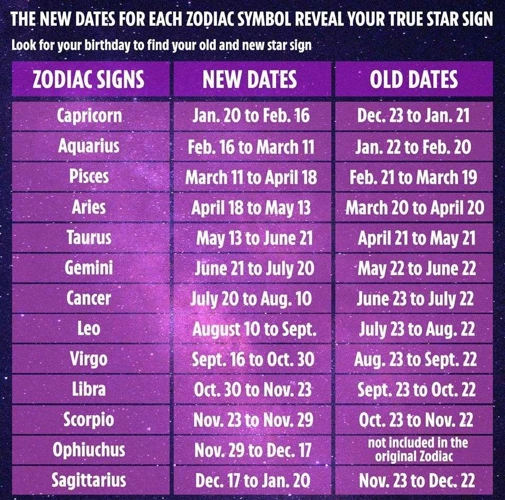
What are the types of Aspects?
There are several types of aspects in astrology, including conjunctions, oppositions, trines, squares, sextiles, and quincunxes. These different aspects have unique energies and effects on a person’s life.
What is the significance of Major versus Minor Aspects?
Major aspects, such as conjunctions and oppositions, are considered more significant and have a stronger impact on a person’s life. Minor aspects, on the other hand, have a more subtle influence on the individual.
What are Conjunctions in astrology?
Conjunctions occur when two planets are closely aligned in the same sign or within a few degrees of each other. This aspect intensifies the energies of the planets involved and signifies a strong blending of their qualities.
What are Oppositions in astrology?
Oppositions happen when two planets are approximately 180 degrees apart in the birth chart. This aspect represents a dynamic tension between two opposing forces or energies and can often manifest as a need for balance and integration.
What are Trines in astrology?
Trines occur when two planets are approximately 120 degrees apart in the birth chart. This harmonious aspect represents flowing and supportive energies between the planets involved, indicating areas of ease, talent, and creativity.
What are Squares in astrology?
Squares occur when two planets are approximately 90 degrees apart in the birth chart. This challenging aspect represents tension, obstacles, and conflicts. It often brings about growth and transformation through overcoming adversity.
What are Sextiles in astrology?
Sextiles occur when two planets are approximately 60 degrees apart in the birth chart. This favorable aspect signifies opportunities, creativity, and cooperation between the planets involved, bringing about positive developments in various areas of life.
What is a Quincunx in astrology?
A quincunx occurs when two planets are approximately 150 degrees apart in the birth chart. This aspect represents a sense of imbalance or tension and often requires adjustment, adaptation, and integration of the energies involved.
How do aspects influence personality traits?
Aspects in astrology can shed light on an individual’s personality traits by showcasing how different planetary energies interact and influence each other. They can reveal strengths, challenges, and potential areas of growth and development within a person’s character.
References
- Everything You Need To Know About Aspects In Astrology
- Aspect patterns — the building blocks of astrological charts
Frequently Asked Questions

1. What is the importance of analyzing aspects in astrological chart interpretation?
Analyzing aspects in astrological chart interpretation is crucial because aspects reveal the relationships between planets and help in understanding the dynamics of an individual’s personality, life events, and potential challenges.
2. How can I understand the different types of aspects in astrology?
To understand different types of aspects in astrology, you need to familiarize yourself with the basic aspects such as conjunctions, oppositions, trines, squares, sextiles, and quincunx. Each aspect has its own unique meaning and impact on the individual’s chart.
3. What are aspect orbs and why are they important?
Aspect orbs refer to the allowable range of degrees within which two planets can form an aspect. They are important because they determine the strength and significance of an aspect. The tighter the orb, the more potent the aspect is considered to be.
4. How do major aspects differ from minor aspects in astrological chart interpretation?
Major aspects, such as conjunctions, oppositions, and squares, are considered more influential and impactful in astrology. Minor aspects, like sextiles and quincunxes, have a subtler influence and are often seen as supporting or modifying the major aspects.
5. Can you explain the significance of conjunctions in astrology?
Conjunctions occur when two planets are in close proximity to each other in the same sign or degree. They represent a merging and intensification of energies, indicating a strong focus on the qualities associated with those planets in the individual’s life.
6. How do oppositions affect an individual’s astrological chart?
Oppositions occur when two planets are directly across from each other in the chart. They symbolize a duality and tension between the energies represented by those planets. Oppositions often manifest as inner conflicts or the need to find balance between opposing forces in the individual’s life.
7. What does a trine indicate in astrology?
A trine is a favorable aspect that occurs when two planets are approximately 120 degrees apart. Trines represent harmony and ease, indicating areas of natural talent, creativity, and positive flow in the individual’s life.
8. How do squares influence an individual’s astrological chart?
Squares occur when two planets are approximately 90 degrees apart. They signify challenges, tension, and conflicts that need to be addressed and overcome. Squares often push individuals to take action and make changes in certain areas of their lives.
9. Can you explain the significance of sextiles in astrology?
Sextiles occur when two planets are approximately 60 degrees apart. They represent opportunities, growth, and supportive energies that can assist in achieving one’s goals. Sextiles often indicate areas where the individual can easily express their talents and abilities.
10. What does the quincunx aspect indicate in astrological chart interpretation?
A quincunx occurs when two planets are approximately 150 degrees apart. It represents a sense of dissonance or adjustment that needs to be made in the individual’s life. Quincunxes often require adaptability and flexibility to navigate challenges and find integration in conflicting areas of life.
References
- Aspect patterns — the building blocks of astrological charts
- Your Guide to Planetary Aspects
- Identifying Patterns on Your Astrological Birth Chart




